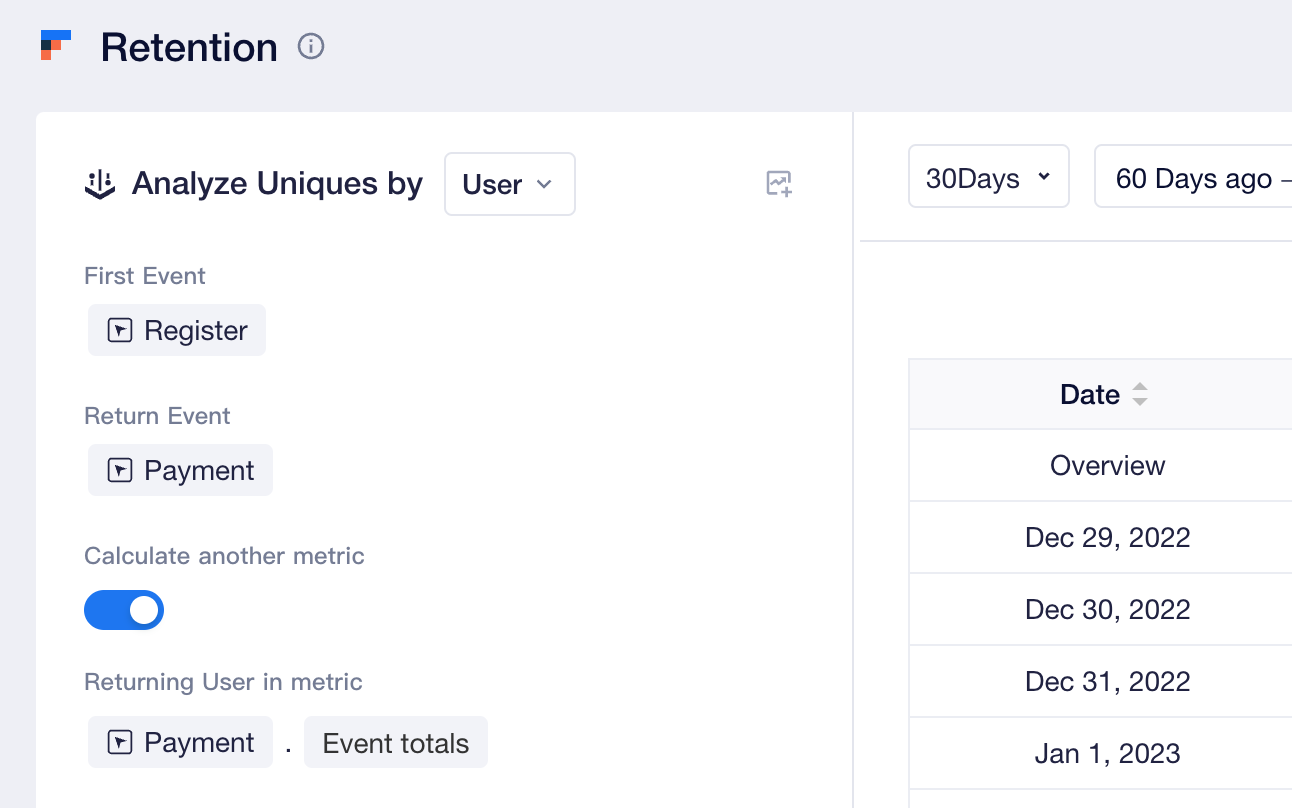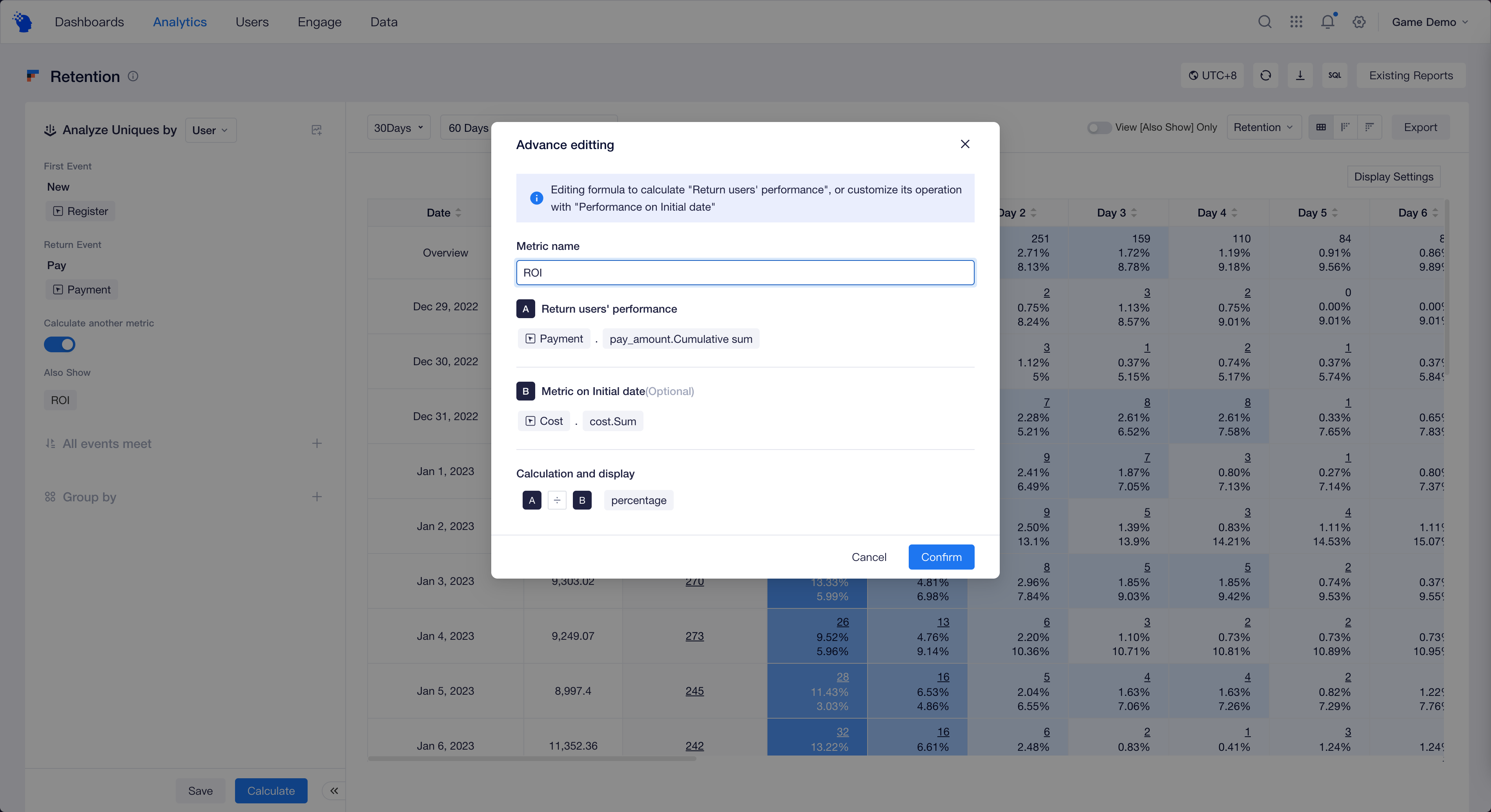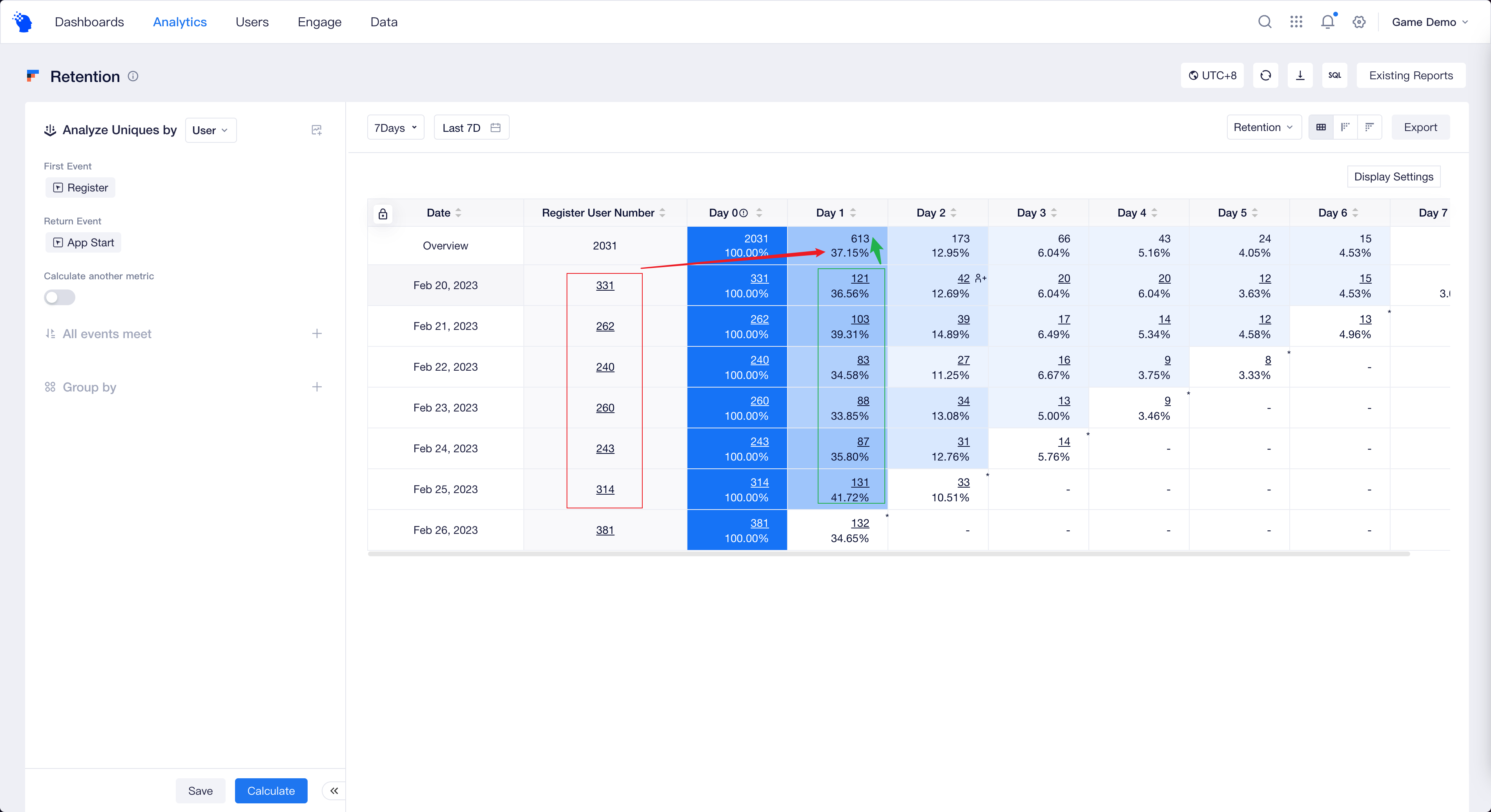# Instructions on logic of Overview
A phase value is an aggregation of retention over a period of time, which helps you quickly learn about data performance. This chapter is dedicated to explaining the computational logic of phase values. You may find corresponding computational logic based on the definitions of analysis metrics.
# Logic of built-in analytical metrics
The retention analysis model computes the following built-in analysis metrics regardless of whether Also Show is enabled or not, and the computational logics of corresponding phase values are as follows:
| Analysis metric | Computational logic |
|---|---|
| First Event Number | Simple addition of different date data |
| Rentention Number | Simple addition |
| Retention Rate | Weighted average, that is, ( simple addition of Rentention Number) / ( simple addition of First Event Number) |
| Churn Number | Simple addition |
| Churn Rate | Weighted average, that is, ( simple addition of Churn Number) / (simple addition of First Event Number) |
# Logic of Another metric
For the Another metric involving different definitions, phase values will adopt different computational logics to adapt to actual business scenarios.
- only entailing the metric of returning users

If the return users metric you select is an equation or a non-equation that does not use the "average per user" computational method, then the computational logic of phase value is the arithmetic mean of the return users metric across different dates.
If the return users metric you select is based on the "average per user" method, then the phase value is computed by weighted average. The average-per-user computational methods include: total per user, user average and accumulative user average.
For example, the phase value of total per user is equal to (total times of D1+total times of D2+...)/(number of users of D1+number of users of D2+...)
- Metric on Initial date
Whatever computational method is used for the initial date metric you select, the phase value is always computed by the arithmetic mean method.
- entailing "Return users' performance" and "Metric on Initial date"

If the arithmetic operations between "Return users' performance" and "Metric on Initial date" are addition, subtraction and multiplication, then the computational logic of the phase value is arithmetic mean.
If the arithmetic operation is division, then the computational logic is weighted mean, that is, the sum of "Return users' performance" across different dates/the sum of "Metric on Initial date" across different dates.
# Influence of incomplete data on phase value
When phase value is computed, incomplete data will be ruled out. That is to say, the phase value is computed only based on complete data.

For example, if you view the phase value of retention rate between January 1 and January 7 on January 8, given the fact that the next day of January 7, that is, January 8, has not ended, the phase value is equal to the weighted mean of retention rates between January 1 and January 6, and the number of users involving the trigger action on January 7 and the number of users retained on the following day will not be included in the phase value.
